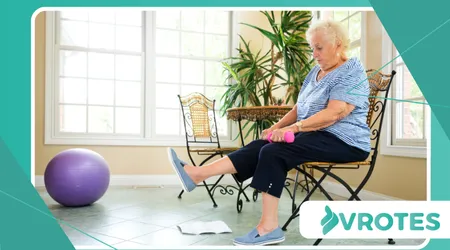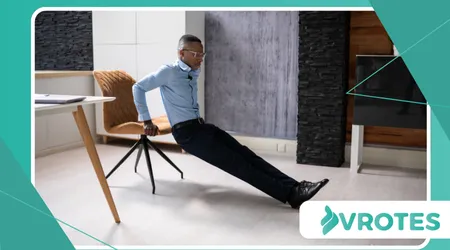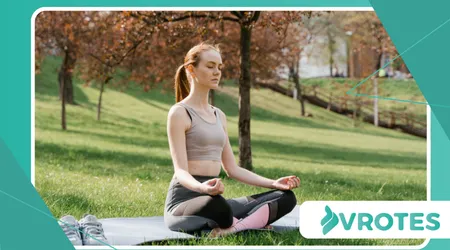Chair Exercises for Flexibility and Joint Relief

Chair exercises. For many, the thought of exercise conjures images of intense workouts and complex movements.
Anúncios
But what if your most accessible piece of furniture held the key to better health? Your chair isn’t just for sitting; it’s a versatile tool for enhancing well-being.
Midlife often brings new considerations regarding physical activity. Our bodies change, and traditional exercises might become less appealing or even challenging.
This is where the brilliance of seated movement shines through.
It’s about meeting your body where it is today. You don’t need fancy equipment or a gym membership. Just a sturdy chair and a willingness to explore new possibilities.
Anúncios
Think of your chair as a stable anchor. It provides support, reducing the fear of falls and instability. This newfound security empowers you to move with greater confidence and freedom.
This accessibility makes it ideal for everyone.
Whether you’re recovering from an injury, managing chronic pain, or simply seeking a gentle yet effective routine, chair-based movements are a game-changer.
Unlocking Flexibility: Gentle Stretches, Big Benefits
Flexibility often diminishes with age, leading to stiffness and reduced range of motion. Chair exercises directly address this, promoting limberness without putting undue stress on your joints.
Start with simple neck rolls. Gently tilt your head from side to side, feeling the stretch. Then, slowly rotate your head, always mindful of any discomfort.
Shoulder rolls are next. Circle your shoulders forward and then backward. This releases tension and improves circulation in the upper body.
Seated cat-cow stretches are incredibly effective. Arch your back as you inhale, then round it as you exhale. This gentle spinal movement can alleviate back stiffness.
Leg extensions, performed while seated, strengthen your quadriceps and hamstrings. Slowly extend one leg straight out, hold, then lower it. Repeat with the other leg.
Ankle circles improve mobility in your feet. Rotate your ankles in both directions. This is particularly beneficial for those who sit for extended periods.
Even simple wrist rotations can make a difference. Keep your forearms supported and gently rotate your wrists. This helps with everyday tasks.
Soothing Joints: How Seated Movement Reduces Discomfort
Joint pain can be debilitating, impacting daily life. Chair exercises offer a low-impact solution, lubricating joints and building supportive muscles.
Movement is medicine for aching joints. It encourages the production of synovial fluid, which acts as a natural lubricant. Stagnation, conversely, often exacerbates stiffness.
By supporting your body weight, the chair lessens the load on your knees and hips. This significantly reduces the impact often associated with standing exercises.
Read here: Yoga Poses That Balance Hormones and Reduce Hot Flashes
Consider a creaky door that’s rarely opened. When you finally move it, the hinges groan. Regular, gentle movement, like with chair exercises, is like oiling those hinges.
Strengthening the muscles surrounding your joints provides crucial support. Stronger muscles stabilize the joint, reducing strain and improving alignment.
For instance, seated hamstring curls directly target the muscles behind your thighs. This helps support the knee joint and can alleviate discomfort.
Similarly, inner and outer thigh squeezes, performed with a small ball between your knees, strengthen the hip abductors and adductors, crucial for hip stability.
A relevant statistic highlights the importance of such proactive measures:
The Centers for Disease Control and Prevention (CDC) reported in 2023 that approximately 58.5 million adults in the United States have doctor-diagnosed arthritis, emphasizing the widespread need for accessible joint-friendly activities.

Crafting Your Chair Exercise Routine: A Step-by-Step Guide
Designing an effective routine doesn’t have to be complicated. Start small, listen to your body, and gradually increase intensity. Consistency is far more important than intensity.
Begin each session with a warm-up. Gentle marching in place while seated, or slow arm circles, can prepare your body. Always prioritize slow, controlled movements.
Dedicate 5-10 minutes to targeted flexibility exercises. Focus on areas that feel particularly stiff. Breathe deeply throughout each stretch.
Move into strength-building exercises. Aim for 8-12 repetitions for each movement, or as many as you can comfortably perform. Your chair remains your support.
Finish with a cool-down. Gentle stretches held for 20-30 seconds each can help lengthen muscles and prevent soreness. Relaxation is key here.
Aim for at least 3-5 sessions per week. Even short, consistent bursts of movement are incredibly beneficial. Remember, every little bit counts.
See how interesting: Walking Plans to Increase Energy and Mood in Midlife
An example of a full routine could be: 5 minutes warm-up (seated marching, arm circles). 10 minutes flexibility (neck rolls, shoulder rolls, seated cat-cow, leg stretches).
10 minutes strength (seated leg extensions, bicep curls with light weights or water bottles, tricep dips using chair). 5 minutes cool-down (gentle stretches).
Here’s another example: Imagine your day has been filled with computer work. Your shoulders feel tight. A targeted routine might focus on shoulder blade squeezes, chest openers, and gentle spinal twists all from your chair, providing immediate relief and preventing future stiffness.
Enhancing Your Seated Workout
Once you’re comfortable with the fundamentals, you can add variations to your chair exercises to challenge yourself further. Small changes can yield significant results.
Incorporate light weights, resistance bands, or even water bottles. These add resistance, making exercises more challenging and building greater strength.
Perform exercises slowly and with control. Focusing on the muscle contraction rather than momentum increases effectiveness. Quality over speed.
Try adding balance challenges. While seated, lift one foot slightly off the floor, then the other. This helps improve stability and core strength over time.
Consider incorporating mindful breathing techniques. Synchronizing your breath with your movements enhances the benefits of each exercise.
Explore seated yoga or Pilates routines. Many online resources offer guided sessions tailored for chair-based practice, expanding your repertoire.
Always remember to maintain good posture. Sit tall, with your shoulders relaxed and your core engaged. This maximizes the benefits and prevents strain.

The Ripple Effect: Holistic Benefits Beyond Physicality
The advantages of consistent chair exercises extend far beyond just physical improvements. They contribute to a more vibrant and fulfilling midlife.
Improved circulation delivers oxygen and nutrients throughout your body. This can boost energy levels and enhance overall vitality.
Reduced stress and anxiety are common side effects. Movement is a powerful mood enhancer, releasing endorphins that promote well-being.
Better sleep quality often follows regular physical activity. A body that’s been moved and stretched tends to rest more deeply.
Enhanced cognitive function is another surprising benefit. Blood flow to the brain improves, potentially sharpening focus and memory.
Increased independence and confidence are invaluable. Being able to move freely and without pain empowers you in all aspects of life.
The sense of accomplishment from sticking with a routine, even a gentle one, fosters self-efficacy. It’s a quiet victory each day.
| Exercise Type | Benefits for Flexibility | Benefits for Joint Relief |
| Neck Rolls | Releases neck tension, improves cervical spine mobility | Reduces stiffness in neck joints, improves posture |
| Shoulder Circles | Enhances shoulder range of motion, alleviates upper back stiffness | Lubricates shoulder joints, strengthens surrounding muscles |
| Seated Cat-Cow | Increases spinal flexibility, improves posture | Decompresses spinal discs, reduces lower back pain |
| Leg Extensions | Stretches hamstrings, strengthens quadriceps | Supports knee joint, reduces strain on patella |
| Ankle Circles | Improves ankle mobility, prevents stiffness | Enhances circulation in ankle joints, reduces swelling |
Embrace the Power of Seated Movement
The journey through midlife is an invitation to redefine what’s possible for your body.
Chair exercises aren’t just an alternative; they’re a powerful, accessible, and highly effective pathway to enhanced flexibility and profound joint relief.
++ Tips to Reduce Stress Without Adding Time to Your Day
Why not give your chair a new purpose and unlock a more comfortable, mobile you? Start today, and feel the difference.
Frequently Asked Questions
Are chair exercises suitable for everyone, regardless of fitness level?
Yes, chair exercises are highly adaptable. They can be modified for beginners, those with limited mobility, or individuals recovering from injury. Always listen to your body.
How often should I do chair exercises for optimal results?
Aim for at least 3-5 times a week, or even daily short sessions. Consistency is key, even if each session is only 10-15 minutes long.
Do I need any special equipment for chair exercises?
Not necessarily. A sturdy chair is the main requirement. You can optionally add light hand weights, resistance bands, or even household items like water bottles for added challenge.
Can chair exercises help with chronic pain conditions like arthritis?
Absolutely. Gentle, consistent movement helps lubricate joints, strengthen surrounding muscles, and improve flexibility, which can significantly alleviate pain and stiffness associated with conditions like arthritis. Consult your doctor for personalized advice.
Can I combine chair exercises with other forms of physical activity?
Yes, they complement other activities beautifully. Chair exercises can be a warm-up, cool-down, or a standalone workout on days when more intense exercise isn’t feasible. They enhance overall mobility and readiness for other movements.
